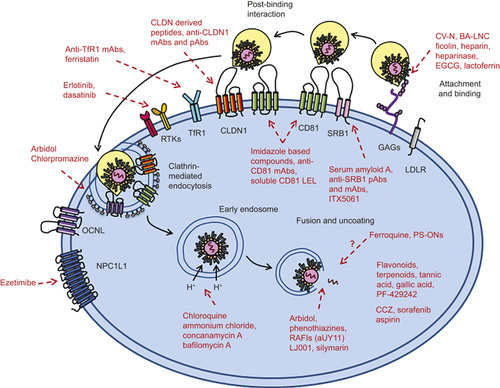Figures & data
Table 1 The process of viral entry and targets for antiviral agents with their development stage

